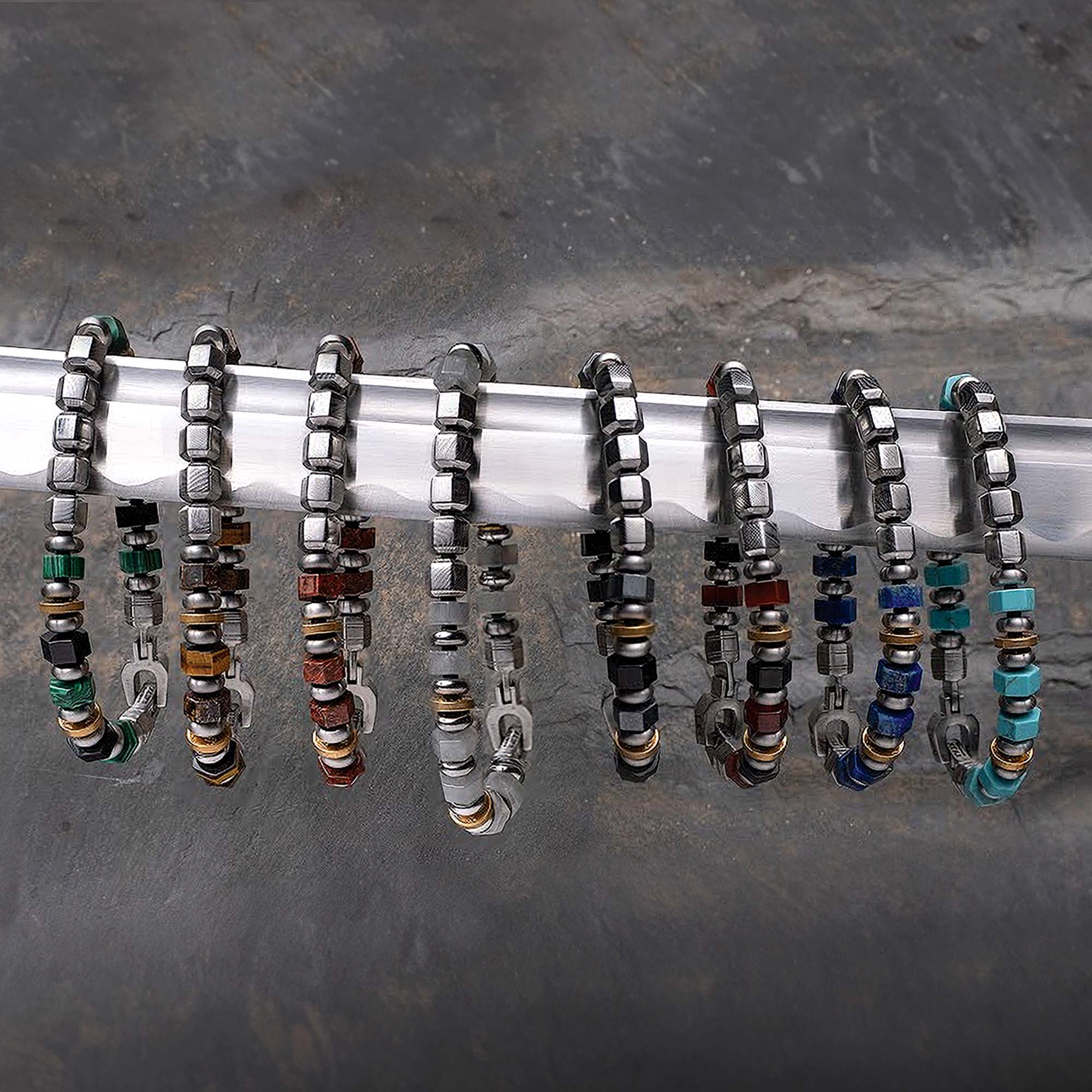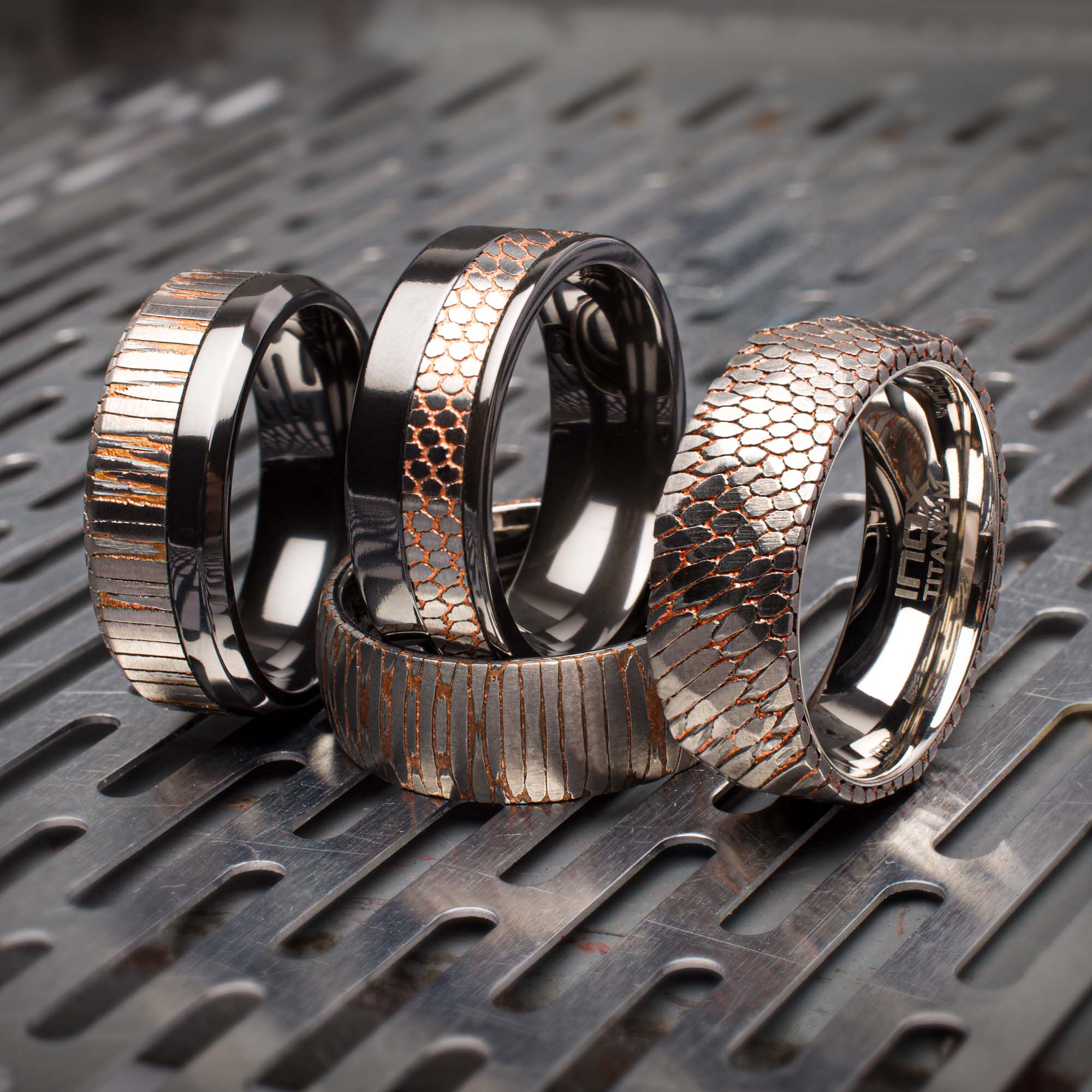Iron and steel jewellery
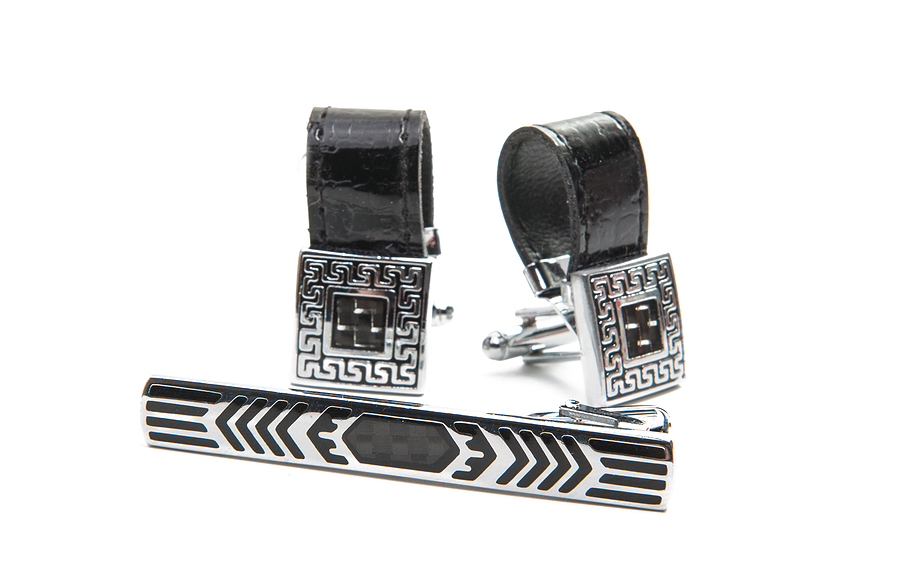
Would you donate gold jewellery to the government in exchange for iron jewellery? In the early 1800s, many Prussians did that to help raise money to fight Napoleon. After Napoleon was defeated in 1815, iron jewellery became so popular that several iron foundries were established in Berlin to meet demand for iron jewellery like the Berlin iron bracelet in Figure 1 from Three Graces Antique Jewellery. A matte black lacquer finish helped prevent rust. Even though Berlin iron jewellery eventually went out of style, the antique pieces are prized by collectors today.
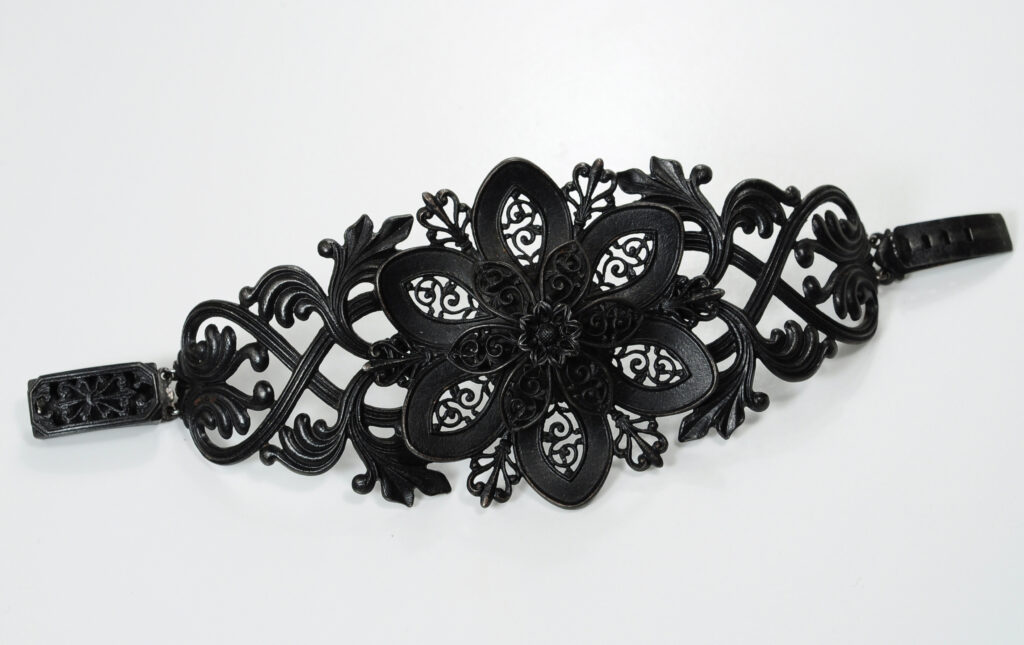
Iron versus steel and stainless steel
Iron is a natural metal element with the chemical symbol “Fe” and the atomic number 26. It is magnetic and attracts other ferromagnetic metals.
Steel is an alloy made by mixing iron and carbon together. Given its carbon content, it is stronger and harder than iron.
Stainless steel is steel alloyed with at least 10–13 per cent chromium for corrosion resistance (sources differ on the percentage of chromium required). Nickel may also be added to increase corrosion resistance. Stainless steel jewellery is sometimes identified with the stamp INOX, another adjective used to identify stainless steel; it’s from the French inoxydable for “rustproof.”
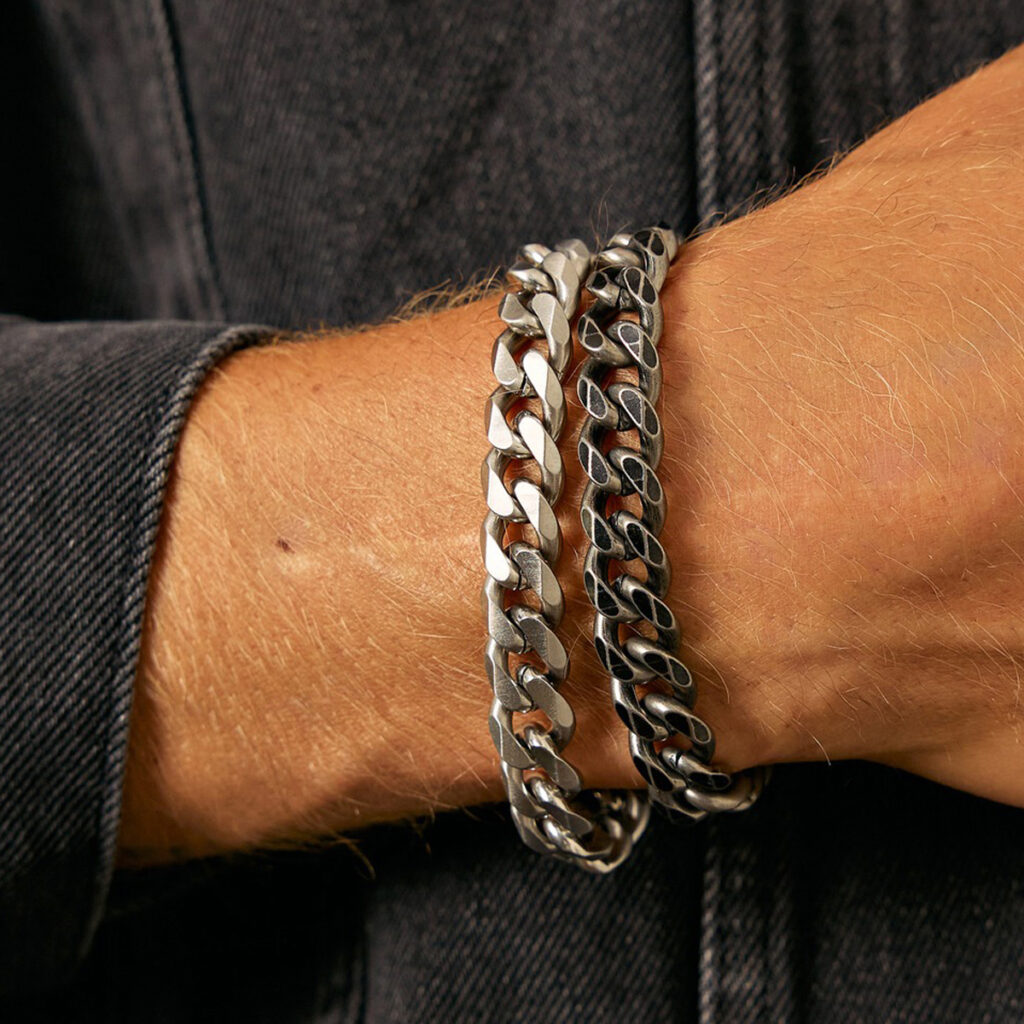
Stainless steel grades used for jewellery
Steel’s properties vary depending on its composition and structure. Grades 304, 316, and 316L are the most common types used for jewellery because they have a high corrosion resistance and can be polished to a high luster.
Grade 304 is the lowest priced of the three grades because it has less chromium and is therefore not as resistant to corrosion as the 316 grades, especially at very high temperatures.
Grade 316L is similar to grade 316 but has a lower carbon content, so it has even better corrosion resistance than 316. In addition, 316L does not require post-weld annealing. A.R.Z. Steel in Montreal says on its website that they only use 316L stainless steel because of its exceptional durability, corrosion resistance, and hypoallergenic properties. Figure 2 shows two examples of 316L stainless steel bracelets by A.R.Z. Steel.
Surgical steel jewellery
Surgical steel is a stainless steel that is designed for biomedical applications but is sometimes used for jewellery. It costs more than standard stainless steel, but surgical steel has the following benefits:
- Greater resistance to rust and corrosion because it has higher levels of chromium (18 per cent- 20 per cent)
- Lower carbon content, which reduces the risk of adverse reactions to medical implants
- Stricter manufacturing standards
- A higher melting point and thermal stability, which allow it to withstand repeated sterilization cycles at high temperatures without degrading.
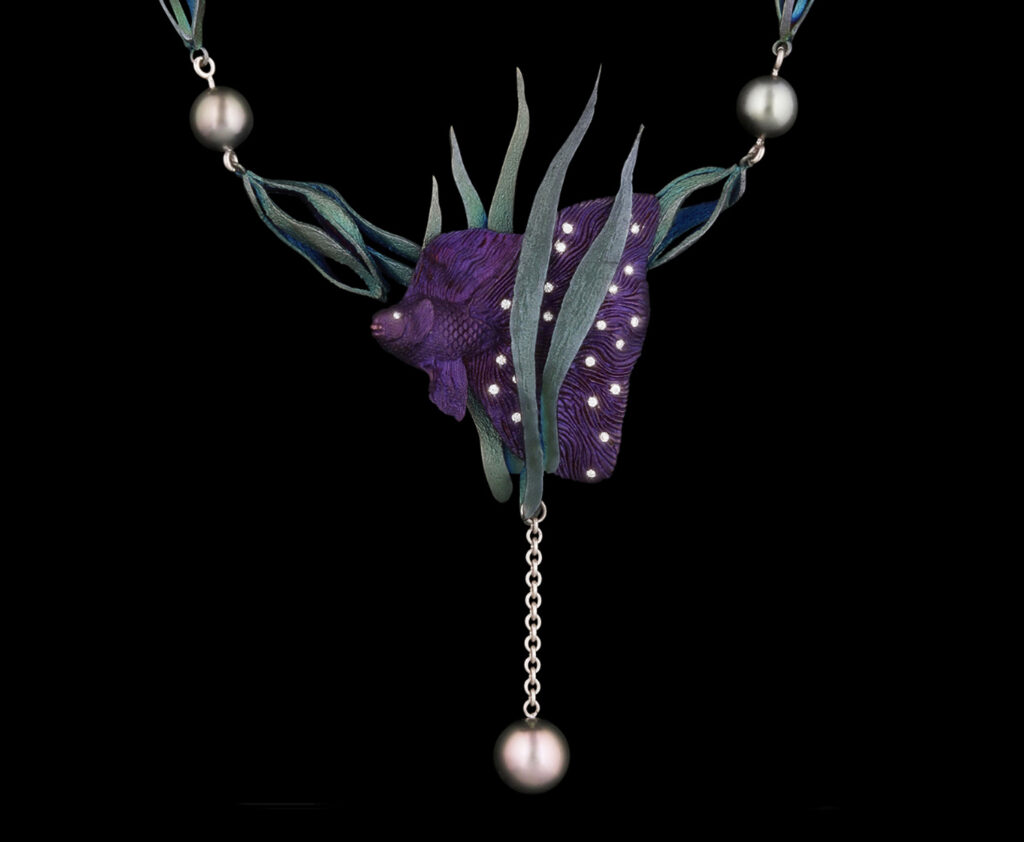
Zoltan David uses innovative colouring techniques for his surgical steel jewellery. The blue-green and purple colours on his “Under the Sea” necklace (Figure 3) were created with a physical deposition process using various combinations of metallic atoms in a gaseous state that are then diffused and bonded into the surface of the receiving substrate of steel. David says, “The various formulations of metallic atoms determine the colour. This type of coloured steel is far more durable than an oxide treatment and will last indefinitely with reasonably proper care.”
David’s proprietary black steel has an intense black and mirror-like surface and is scratch—and wear-resistant. He has trademarked it as Knightsteel. The “Waltz” black diamond ring in Figure 4 shows Knightsteel combined with platinum inlay using a technique involving cold connection, hand engraving, and shaping of the platinum.
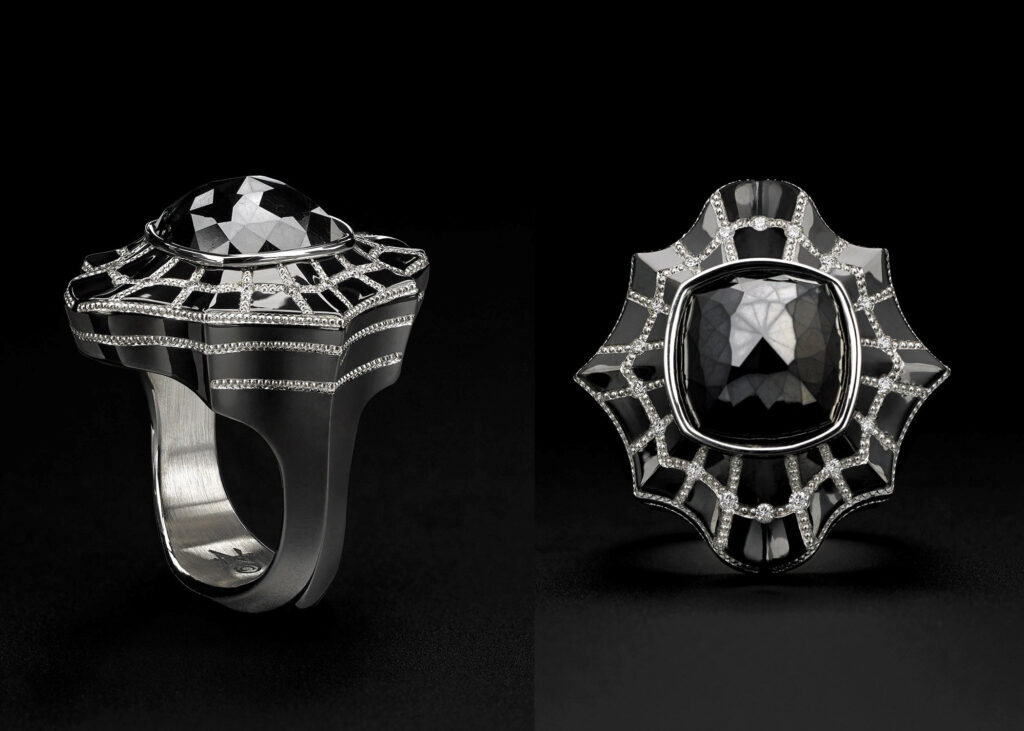
“Setting gemstones in steel is more demanding than setting gems in precious metals, which are far softer than steel. Precious metal has a high degree of malleability with an ability to slightly conform to the footprint of a gem when placed into it, whereas steel is far less malleable and will not slightly conform to the gem’s footprint. Therefore, the receiving seat for the gem must be exactly configured pre-gem setting,” says David.
Damascus steel
Historically, Damascus steel was a type of high-carbon steel used in sword-making from about 300 BC to around 1800 AD. It had distinctive patterns, and much of it was made into high-quality swords in Damascus, Syria.
Today, however, “Damascus steel” usually refers to an exotic pattern-welded steel, created by welding together from around 50 to 1,000 layers of different alloy steels and etching it in acid. The acid etches the different alloys at different rates, thus creating a wood-grain type pattern. The alternating layers of different steel alloys create a kind of microscopic, serrated edge that contributes to Damascus steel blades being superior cutting tools. In addition, the properties of the correct steel alloys make the Damascus steel capable of being hardened and tempered for a very strong, sharp, and durable edge.
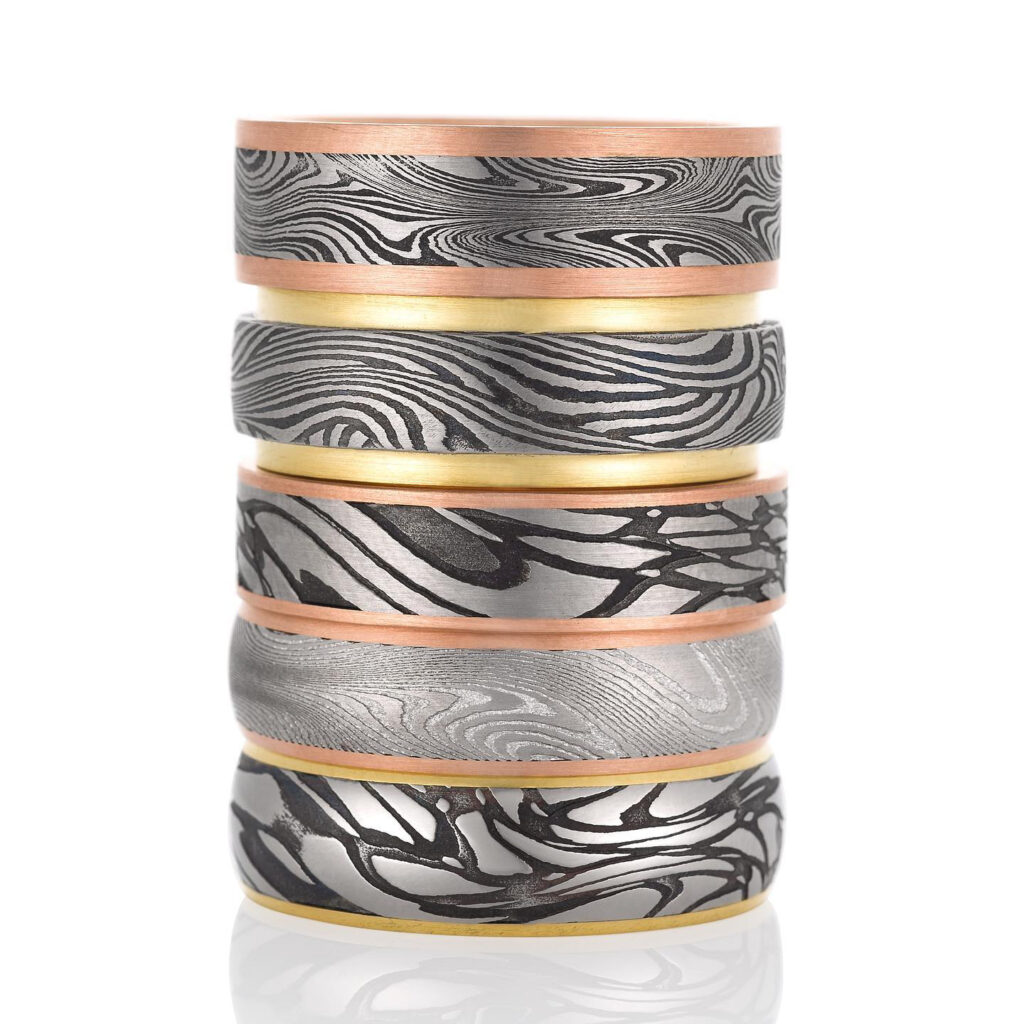
High-carbon steel is often used for Damascus blades, but it can rust. Master jeweller Chris Ploof prefers to use high-grade stainless steel for his Damascus steel jewellery because it resists corrosion and is durable and hypoallergenic. Ploof sometimes accents Damascus steel with other metals. His one-of-a-kind rings in Figure 5 have a combination of Damascus steel and 14K red gold or l8K yellow gold.
Caring for steel jewellery
High-quality steel is durable and harder than gold and platinum, but it can be scratched and damaged. To ensure that steel jewellery remains in good condition:
- Clean it regularly with a soft cloth and mild liquid detergent instead of with brushes or scouring pads, which can scratch the metal.
- Avoid exposure to harsh chemicals such as chlorine, acetone, and strong cleaning agents.
- Store jewellery pieces separately to avoid scratches. Cloth jewellery pouches and rolls or mini plastic Ziploc bags offer protection.
- If a ring needs resizing, have it done by a skilled jeweller experienced in handling steel.
Given its hardness, resizing requires specialized techniques such as laser cutting and welding or stretching. However, these techniques require precision to avoid damaging the piece.
Steel rings can be sized up or down.
- Avoid wearing jewellery while participating in contact sports, working out at the gym, or doing rough work. If you want to wear a ring for sentimental reasons, wear protective gloves.
Steel jewellery has many advantages; It’s durable, attractive, sizeable, recyclable, and affordable. With proper care, it can provide a lifetime of enjoyment and wear.
Renée Newman, GG, is a gemmologist and the author of Gold, Platinum, Palladium, Silver & Other Jewelry Metals and 14 other books on jewellery and gems. She became interested in jewellery metals while overseeing jewellery quality control at the Josam Diamond Corporation in downtown Los Angeles. For more information about Newman and her books, visit ReneeNewman.com.

